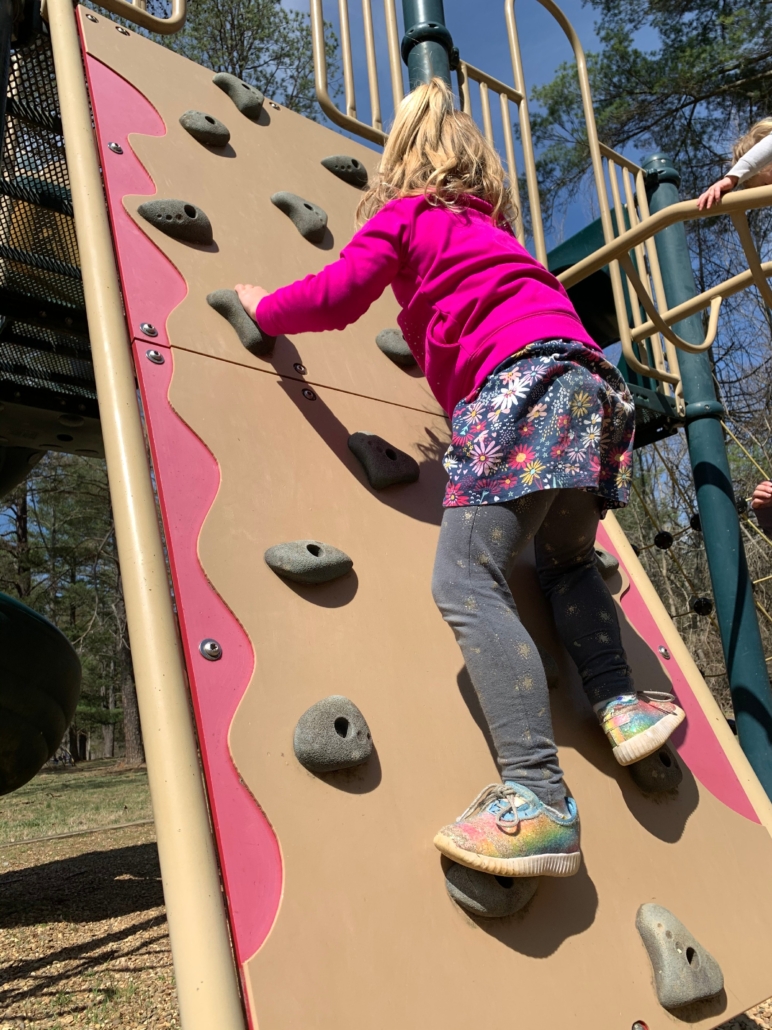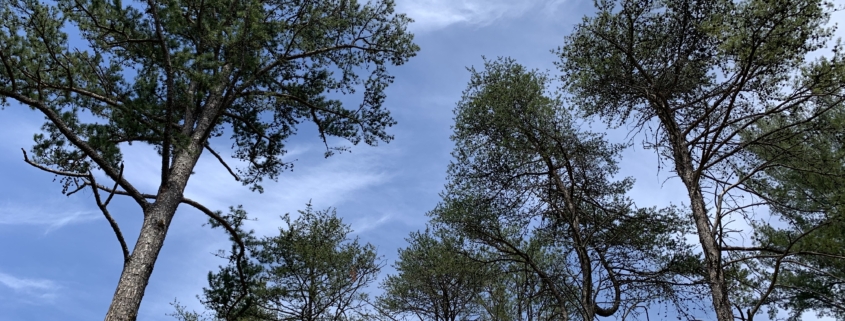Finding Peace in Nature: Wardensville Town Park
“If you need a bit of perspective, climb a tree” -Winnie the Pooh
Dear Friend of WV Rivers,
Happy Arbor Day!
You may be thinking to yourself, “back up a minute, Mr. Rivers Guy, why are you talking about trees?!”
Aside from being a total tree nut (pun included – dad jokes for the win!), I can say without hesitation that trees and clean water are inextricably linked. Simply put – we would not have clean water without healthy forests and trees.
But beyond clean water, trees give us something else altogether. They connect us to nature and wildlife. They inspire us with their beauty. They humble us in their grandeur. They add shape, color, and texture to the world around us, and in doing so, help form our perspective of what the world should be.
I invite you to climb a tree, or at least some playground equipment, such as we did recently at Wardensville Town Park.
Wardensville Town Park, located geographically in the middle of our family in Jefferson County and my mother in Grant County, has been our go-to park during the pandemic for socially-distanced family gettogethers.
The park is sited on the banks of Waites Run, a tributary to the Cacapon River. You’ll find amenities for the whole family, including a paved walking loop, playground, and a rocky-bottomed stream for a splash in the summer.
Wardensville Town Park has something else that also makes it special…trees!
Ok, ok…it might not have a famous 500 year old oak tree (RIP, Mingo Oak). But trees nonetheless.
And what is a park without trees? I’ll tell you – it’s like rain, on your wedding day…
In celebration of Arbor Day, we wanted to highlight one of our partners in the eastern panhandle – Frank Rodgers with Cacapon Institute. Below is a conversation we had with him recently about the importance of trees.
Let’s start off easy – what is your favorite tree?
What I call “boundary trees” – the trees that mark boundary lines and cannot, by law, be cut down. They can be hundreds of years old. If you want to find an old-old tree, look around the property edges of historic cemeteries, churches, and farms. They are fun to see because, once you get the knack where to look, you will start seeing them, often along fence lines.
Introduce us to Cacapon Institute – who are you, and what is your mission?
I have been executive director of Cacapon Institute since 2012 following in the footsteps of Neil Gillies, George Constantz and Nancy Ailes. CI was founded in 1985 to protect the Cacapon watershed and Appalachian waters from harmful development. In 2006 we adjusted our mission to look downstream. Today, from the Cacapon River, to the Potomac, to the Chesapeake Bay, we protect rivers and watersheds using science and education. Our favorite education is hands on education assisting schools, watershed groups, neighborhood associations, and municipalities to reduce stormwater runoff pollution by protecting and planting trees and managing their green and gray infrastructure.
Tell us more about the connection between trees and clean water.
Trees are essential to clean water. They live in the same biosphere that people do, that is to say they live on the surface of the planet at the same elevations and temperatures as we do. That sounds obvious but, on a global scale, that space is very small. At the scale of a classroom globe 14” across, the layer of breathable air is less than the width of a piece of paper. Also, more than 80% of the world is uninhabitable for people just as it is for trees because it is covered by water, ice, or desert. Trees hold water in that biosphere where, like trees, we need it to be. They shade the planet, keeping water from evaporating and capturing rain water to keep water from running off, causing erosion, and muddying streams and rivers we depend on.
How is the water quality at Waites Run?
The headwaters of Waites Run is in the George Washington & Jefferson National Forest, and is so clean that CI uses it as our standard for water quality. We compare all our other river water samples to our Waites Run sample to see how clean the water can possibly be.
How does Cacapon Institute help people plant trees?
Any way we can! We have three core efforts. The Carla Hardy WV Project CommuniTree offers trees at no cost for volunteers to plant on public lands. Our Potomac Headwaters Leaders of Watershed offers students an opportunity to learn about and plant trees on or near their campus. Lastly, our Community Environmental Management program provides trees and funding to support municipalities, neighborhoods, and faith-based organizations that are planting trees or practicing other watershed conservation best management practices.
Can you explain some of the ways you advocate for tree-related policies at the state and federal level?
As a supporter of WV Rivers and member of the Choose Clean Water Coalition, we advocate for laws and policies to protect rivers and watersheds. Watersheds, the area of land that drains to stream and rivers, are important because pollution does not start in the streams, it comes off the land—the watershed. As a members of the WV Urban & Community Forestry Council and U.S. EPA Chesapeake Bay Program Forestry Work Group, Cacapon Institute works to advance scientific understanding of trees and promote practices that protect trees, including increasing public understanding of the importance of trees.
Lastly, do you have any advice for budding tree climbers?
My advice to all climbers is be safe. Never take another step up until you are doubly sure of the steps back down.
Stands of pine trees shade Waites Run, a tributary to the Cacapon River.
Ah, the simple wisdom of Winnie the Pooh…”if you need a bit of perspective, climb a tree.”
But isn’t he right? The concept of gaining perspective – of seeing the world with fresh eyes – resonates strongly with me, as the environmental issues we face require creativity, innovation, and new solutions. Essentially, they require a new perspective.
And there’s no better way to gain that perspective than by changing the way we see the world by becoming the masters of our own perspective.
So if climbing trees isn’t your thing (and it really should be!), you can always take a trip to your local park. No matter what you do, remember to climb. And by that I mean be bold, and keep reaching higher.
Change your perspective, and you just might change the world.
To clean water and clean hands,
Tanner Haid, Eastern Panhandle Field Coordinator
PS – if you haven’t already, sign-up to receive our weekly Water Policy Updates during the WV legislative session on policies that affect our water resources, and simple actions you can take to keep your water safe.







